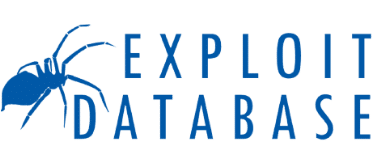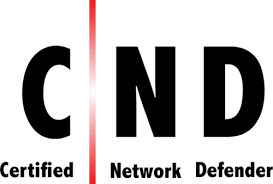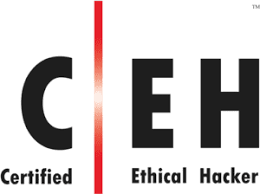BCA with Diploma in Information Security and Cyber Defense
Diploma in Information Security and Cyber Defense
Learn more about the Course
Overview of Diploma in Information Security and Cyber Defense
The BCA with Diploma in Information Security & Cyber Defense is a comprehensive program designed to equip students with essential cybersecurity skills. This course integrates theoretical knowledge with practical experience to prepare students for diverse roles in the cybersecurity field.
Students will explore key areas such as System & Networks Engineer- ing, Infrastructure Security & Cybersecurity Engineering, Windows Server Managements, Network Security, Endpoint Protection, Blue Teaming, Active Directory, International Security Compliance & Standards & Threat Management. The curriculum includes practical training in penetration testing, cryptography & incident response & provides hands-on experience with tools commonly used in Penetra- tion testing & Security Operations Centers (SOCs).
Given the increasing complexity of cyber threats, this program is crucial for meeting the growing demand for skilled cybersecurity professionals. Organizations require experts who can identify vulnerabilities, implement eIective defense strategies & respond to security incidents. This course prepares students to address these challenges & positions them as valuable assets in the cybersecurity domain.
RedTeam Future Technology Hub enhances this training with advanced iLab facilities that oIer real-world scenario practice. We provide EC-Council certifications, including CND, CEH, CSA & CPENT all integrated with iLabs. The academy also boasts 100% placement assistance ensuring robust career support. Expert mentors guide students throughout their learning journey, equipping them with the skills necessary for success in cybersecurity. This combination of practical training & career support ensures that graduates are well prepared for roles such as Cyber SOC Analysts, Network Security Engineers, VAPT Analyst, Cyber Security Analyst , Cybersecurity Engineer & Application Security Engineers.
Duration
3 Years
Total Sem
06
Programme Format
Offline
Effort
40 Hrs / Week
Who is the course for?
This certification is meant for
High School Graduates: (Individuals who have completed their +2 education & are interested in starting a career in cybersecurity or IT)
Diploma Graduates: (Who have completed their diploma (equivalent to plus two) & are interested in starting a career in cybersecurity or IT)
Modules In This Course
Take a Look at our Sem 1 Comprehensive Curriculum
01
CCNA
NETWORK FUNDAMENTALS
Introduces the basics of networking, including the OSI and TCP/IP models, IP addressing (IPv4 and IPv6), network topology architectures, physical interfaces, and media. It also covers concepts like switching, routing, and wireless networking essentials.
NETWORK ACCESS
Focuses on Layer 2 technologies, this module covers the configuration and troubleshoot- ing of Ethernet switching, VLANs (Virtual Local Area Networks), and trunking. It also includes concepts of Spanning Tree Protocol (STP), EtherChannel, and Wireless Local Area Networks (WLANs), along with access control mechanisms.
IP CONNECTIVITY
This module delves into Layer 3 technologies, emphasizing routing fundamentals and concepts like static routing, OSPF (Open Shortest Path First) in single-area networks, and inter-VLAN routing. It teaches how routers and switches use routing tables to forward packets eÆciently in a network.
IP SERVICES
This module covers network services essential for IP communication, such as DHCP (Dynamic Host Configuration Protocol), DNS (Domain Name System), and NTP (Network Time Protocol). It also covers concepts like SNMP (Simple Network Management Proto- col) and QoS (Quality of Service).
SECURITY FUNDAMENTALS
In this module, you learn about network security principles such as access control, secur- ing device access, and implementing firewalls. Topics include Access Control Lists (ACLs), wireless security mechanisms (like WPA and WPA2), and basic VPN concepts for secure communication.
AUTOMATION AND PROGRAMMABILITY
The final module introduces automation and programmability in networking, covering modern tools and technologies like Software Defined Networking (SDN) and Cisco DNA Center. It explores network management, automation with APIs, and Python program- ming basics to automate tasks, making networks more eÆcient and scalable.
To Know More
02
MICROSOFT SERVER MANAGEMENT
This section introduces the concept of servers, their roles, and their importance in managing and distributing resources in network environments. Key concepts include server-client architecture, performance considerations, and server hardware/software requirements.
Servers come in various types based on the services they oIer. Common server types include: Web Server, Database Server, File Server, Mail Server, Proxy Server and Appli- cation Server.
This topic covers the installation process for both client and server systems, typically involving setting up Windows Server. The process includes configuring network settings, user permissions, and installing necessary services for client-server communi- cation.
This section dives into various versions of Windows Server and their features such as Active Directory, Hyper-V for virtualization, DNS, and DHCP services. It also covers management tools like Windows Admin Center and PowerShell for server administration.
Servers can be configured to fulfill specific roles depending on the services needed in the network environment. Typically involves managing network interfaces, setting permis- sions, and securing the server.
This section explains how the attack works, leveraging compromised domain controller credentials, and how to mitigate such risks by tightening Kerberos configurations and regularly rotating keys.
To Know More
03
CND
Types of attacks (DoS, spoofing, phishing) and strategies to defend against them, like intrusion detection/prevention systems (IDS/IPS).
Policies, procedures, and best practices for securing and managing network access, users, and devices at an administrative level.
Hands-on, technical methods to secure network devices, configurations, and architec- tures, including advanced firewall and encryption strategies.
Techniques to secure the network’s edge, including firewall configurations, VPNs, network segmentation, and external threat detection.
Security measures specific to Windows environments, covering antivirus software, system hardening, and vulnerability patches.
Security protocols for Linux based systems, including privilege management, firewall settings (iptables), and system auditing.
To Know More
Modules In This Course
Take a look at our Sem 2 Comprehensive Curriculum
01
Threat & Vulnerability Management
In the world of cybersecurity, essential building blocks include understanding career roles, basic terms, types of threats & common security threats. Being aware of Advanced Persistent Threats (APT), diIerent hacker types & malware is crucial. Recognizing vulner- abilities helps implement eIective measures, while information security governance & standards are essential. Cybersecurity professionals play significant roles in safeguarding digital assets. Regular penetration testing to assess weaknesses is necessary, following established standards for optimal protection.
Cyber attacks include eavesdropping, replay attacks, man-in-the-middle, session hijack- ing, drive-by downloads, DDoS, DNS spoofing, ARP spoofing, wireless attacks, social engineering, masquerading, side-channel attacks, pass-the-hash, Kerberos exploitation, elevation of privilege, typo squatting, and zero-day attacks. Stay vigilant to ensure digital security.
Network security involves various key elements for safeguarding data and systems. The OSI layers facilitate communication between devices. Secure protocols like TLS, HTTPS, SSH, SFTP, DNSSEC, S/MIME, SMTPS, POP3S, and IMAPS ensure encrypted and authen- ticated data transfer. AAA protocols like RADIUS, TACACS+, and Active Directory handle authentication and authorization. EAP, WPA2, and WPA3 enhance wireless securi- ty, while VPN enables secure remote connections. Virtual LAN (VLAN) and network segmentation isolate and organize network trac. Zero Trust Architecture ensures strict access controls. Proxy devices, content filters, and port security fortify network defens- es. Single Sign-On and Federated Identity simplify user authentication. Network Access Control (NAC) verifies and manages device access.
Kali Linux, a popular tool for hackers, requires manual partition during installation and
configuration. Linux, as an operating system, is compared to Windows, and its fundamen- tals are introduced. Basic commands, user management, permissions, and processes are covered. Understanding the file system and booting process is essential, including the role of the kernel in Linux.
Penetration testing involves planning and executing in stages. The process begins with careful Penetration Testing Planning, followed by conducting the actual test. During testing, ensuring Anonymity & Privacy is crucial to maintain confidentiality and security.
Information gathering in cybersecurity involves various techniques. Open-Source Intelli- gence (OSINT) gathers data from publicly available sources. Google Hacking or Google Dorking leverages specific search queries to uncover sensitive information. Recon-ng and theHarvester are tools for automated
To Know More
02
CSA - Certified SOC Analyst
This module covers the foundational aspects of a Security Operations Center (SOC), including the roles and responsibilities of SOC analysts and managers. It introduces the tools, techniques, and workflows used within a SOC to monitor and defend the organiza- tion against threats. It also addresses best practices in security management and daily SOC operations, such as security policy implementation, compliance, and operational standards.
This module focuses on diIerent types of cyber threats (malware, phishing, APTs) and Indicators of Compromise (IoCs) that analysts need to recognize. It explains the lifecycle of a cyber attack using frameworks like the Cyber Kill Chain and MITRE ATT&CK. The goal is to understand adversary tactis, techniques, and procedures (TTPs) and how they can be identified within a network.
This module covers the diIerence between incidents and events, focusing on how logs from various sources (network devices, firewalls, servers, applications) are collected, stored, and analyzed. It explains how logging is essential to detect anomalies and identify potential security incidents. The module also teaches logging standards, log management systems, and event correlation strategies.
This module explores how Security Information and Event Management (SIEM) systems are used in SOCs for incident detection. It includes an overview of SIEM platforms like Splunk, QRadar, and ArcSight, focusing on how these tools collect, normalize, and correlate data from various sources. The module teaches how to configure SIEM alerts, analyze security logs, and detect potential incidents in real-time.
This module focuses on integrating threat intelligence into the incident detection process. It explains the sources and types of threat intelligence, including open-source intelligence (OSINT), commercial feeds, and community-based intelligence sharing. The module teaches how to use threat intelligence to enrich alerts and provide context to security incidents, enabling better detection and response.
The final module covers the entire incident response process, from detection to remedi- ation. It explains the phases of incident response, including preparation, detection, con- tainment, eradication, and recovery. It also highlights the importance of post-incident activities such as root cause analysis, documentation, and lessons learned to improve future incident handling.
To Know More
03
CND
Modules In This Course
Take a look at our Sem 3 Comprehensive Curriculum
01
Vulnerability Assessment & Penetration Testing
It involves protecting computer systems, networks, and data from malicious attacks. Key roles include Security Analysts, Ethical Hackers, and Incident Response Specialists. Threats are potential dangers like malware and phishing, exploiting vulnerabilities such as weak pass- words. Advanced Persistent Threats are sophisticated, long-term attacks. There are three types of hackers: White Hat (ethical), Black Hat (malicious), and Grey Hat (mixed intentions). Malware includes viruses, worms, Trojans, and ransomware. Information Security Governance sets policies, like ISO 27001 and PCI DSS. Network basics include LAN, WAN, WLAN, rout- ers, switches, and firewalls. Secure protocols like TLS, HTTPS, VPN, and EAP enhance security. Network segmentation and Zero Trust Architecture limit access for better protection.
Penetration tests are performed to identify vulnerabilities, assess risks, and enhance security measures. There are three approaches: Black Box (no information given), Grey Box (limited info), and White Box (full info). Types of penetration testing include Network, Web Applica- tion, Client-Side, Wireless, Social Engineering, and Physical. The process involves pre-en- gagement interactions, intelligence gathering, threat modeling, vulnerability analysis, exploitation, and post-exploitation. Standards like OSSTMM, OWASP, NIST, PTES, and ISSAF guide and ensure the quality and eIectiveness of penetration testing.
Kali Linux, a popular tool for hackers, requires manual partition during installation and config- uration. Linux, as an operating system, is compared to Windows, and its fundamentals are introduced. Basic commands, user management, permissions, and processes are covered.
Understanding the file system and bootig process is essential, including the role of the kernel in Linux.
Anonymity and privacy are vital in the digital age to safeguard personal information and online activities. The internet is divided into three layers: Surface (search engines and web- sites), Deep (password-protected content), and Dark Web (hidden and anonymous websites). TOR (The Onion Router) is an anonymity network used to access the Dark Web and protect user identity by routing trac through multiple servers. TOR Browser provides a user-friendly interface for anonymous browsing. Kali Linux can be anonymized for secure penetration testing. TAILS OS is a privacy-focused operating system that leaves no traces on the host machine. Secure communication on the Deep and Dark Web is essential for anonymity. VPN (Virtual Private Network) encrypts internet trac and masks IP addresses for enhanced privacy. VPN protocols like OpenVPN, L2TP/IPsec, and IKEv2 ensure secure connections. Proxies also help in hiding IP addresses, providing another layer of anonymity.
OSINT Framework, TraceLabs, Raccoon, Twint, Sherlock, PhoneInfoga, Shodan, Maltego, and Google Hacking (Google Dorking) are powerful tools used for OSINT investigations.
Recon-ng and theHarvester are tools for collecting data from various sources. OSINT can be conducted on images by reversing and geolocating them. Google Earth is utilized for geospa- tial OSINT. Additionally, time calculation from the shadow of an image can provide valuable information in OSINT investigations.
Scanning is a crucial phase in network reconnaissance, where tools and techniques are used to gather information about target systems. Nmap is a widely used scanning tool. DiIerent types of scanning include TCP Connect, SYN, UDP, and Full Open scans. DNS enumeration involves discovering domain-related information. ICMP is a network protocol used for error reporting and diagnostic messages. FTP, SMB, SMTP, and SNMP are protocols with specific enumeration techniques to identify services and vulnerabilities. PowerShell, Sparta, and Zenmap are powerful tools to aid in scanning and information gathering during penetration testing and cybersecurity assessments.
To Know More
02
CEH
This module provides an overview of ethical hacking concepts, including the roles and responsibilities of an ethical hacker, and the various types of hackers (white hat, black hat, grey hat). It also covers the legal and regulatory considerations for ethical hacking, as well as hacking methodologies.
Focuses on the first phase of hacking: gathering information about a target. This module teaches techniques for reconnaissance, including using tools to perform passive and active information gathering, such as Google hacking, WHOIS lookups, and social engineering.
Covers the process of scanning networks to discover live hosts, open ports, and vulnerabilities. Techniques like network scanning, port scanning, and vulnerability scanning are covered using tools such as Nmap and Nessus.
This module explains how attackers gather more detailed information about the target by interacting directly with systems. Topics include extracting usernames, hostnames, and network resources using enumeration techniques like NetBIOS, SNMP, and LDAP enumeration.
Teaches how to identify security loopholes or weaknesses in systems, networks, and applica- tions. Vulnerability scanning tools, manual testing techniques, and interpreting scan results are key components.
Focuses on gaining access to systems, elevating privileges, maintaining access, and covering tracks. Techniques such as password cracking, keylogging, spyware, and privilege escalation are explored.
To Know More
03
CND
Modules In This Course
Take a look at our Sem 4 Comprehensive Curriculum
01
RedTeam Assessment Techniques
RedTeam Intro: Understand Red Teaming. Motivation, like improving defenses, drives it. Frameworks include Cyber Kill Chain, CBEST, TIBER-EU, ABS, ATT&CK. Phases: Planning, Roles, Rules, Definition of Terms. Involves Ethical Hacking, Vulnerability Assessment, Penetration Testing. Engages Blue Team for defense, Purple Team for collaboration. Adversary Emulation & Simulation. The assumed Breach Model is considered.
Planning Red Team: Manage, Grow, and Build. Team logistics and lab setup. Find common goals and build bridges. Use active defense, honeypot, and decoys. Auto- mate activities and measure persistence.
Graphs for Red Teamers: Learn attack & knowledge graphs. Grasp Graph database basics. Build Homefield graph with Neo4j. Explore the Neo4j browser. Construct a knowledge graph.
PowerShell for Red Teamers: Understand PowerShell basics, editors, and its use in Win- dows and Linux. Learn about Get-Help, verbs, aliases, cmdlets, and parameters. Grasp operator basics, type casting, arrays, hash tables, and lists. Build concepts like modules, functions, branching, and looping. Scripting and advanced features, including remoting, practical use, jobs, and WMI.
Web & Network Exploitation: Focus on OWASP Top vulnerabilities like SQL Injection, XSS, Command Execution, CSRF, Broken Authentication. Learn Network Bypass, Pivoting, ICMP & DNS Tunnelling, and Port Forwarding techniques for eIective exploitation.
Red Team vs. Blue Team Wargame: Utilize Threat Intelligence, SIEM, and Threat Hunting for elective SOC Analyst training and practice
To Know More
02
CEH
03
CND
Modules In This Course
Take a look at our Sem 5 Comprehensive Curriculum
01
CPENT
Cover the fundamentals of penetration testing, including penetration testing approaches, strategies, methodologies, techniques, and various guidelines and recommendations for pene- tration testing.
Learn the diIerent stages and elements of scoping and engagement in penetration testing.
Learn how to use techniques and tools to gather intelligence about the target from publicly available sources such as the World Wide Web (WWW), through website analysis, by using tools/frameworks/scripts, and so on.
Learn diIerent social engineering techniques and perform social-engineering penetration testing on a target organization.
Learn how to implement a comprehensive penetration testing methodology for assessing networks from outsiders’ perspectives. Learn the process attackers follow to exploit the assets using vulnerabilities from the outside of the network perimeter.
Learn how to implement a comprehensive penetration testing methodology for assessing networks from insider’s perspectives.
To Know More
02
CEH
03
CND
Modules In This Course
Take a look at our Sem 6 Comprehensive Curriculum
01
IMPLEMENTING AN ISMS BASED ON ISO 27001
Introduction to ISMS: Learn ISMS Objectives and Definitions. Understand Information, Information Security, Confidentiality, Integrity, and Availability. Explore Security Controls and grasp the concept of Information Security Management System (ISMS).
ISO 27001 Overview: Grasp the structure of ISO 27001, including its clauses and controls, which provide a comprehensive framework for information security management.
Planning ISMS Project: Explore Implementation Scenarios and Steps. Develop a Project Plan and create necessary Project Documentations for a successful Information Security Manage- ment System (ISMS) implementation.
ISMS Implementation: Plan Phase – Cover Clause 4 (Context of the organization), Clause 5 (Leadership), Clause 6 (Planning), with a focus on Risk Assessment, and Clause 7 (Support) to ensure a comprehensive foundation for your Information Security Management System (ISMS) implementation.
ISMS Implementation: Do Phase – Focus on Clause 8 (Operations) and develop a robust Risk Treatment Plan to eIectively manage risks within your Information Security Management System (ISMS) implementation.
ISMS Implementation: Check Phase – Concentrate on Clause 9 (Performance Evaluation), establish Key Performance Indicators (KPIs) / Metrics, conduct Internal Audits, and engage in Management Review for eIective evaluation and continuous improvement of your Information Security Management System (ISMS) implementation.
To Know More
02
CEH
03
CND
The Proof is in the Results:
Student Testimonials
04
Software and Systems Security
05
Incident Response
Redteam Hacker Academy is one of the most quality place to get Cyber Security Training. With great learned professionals and with a friendly approach by the team , learing in RedTeam is a wonderful experience. You can gain a vast amount of information regarding cyber world.For me, It was a great experience learning in Red Team

Vivek Jayaprakash
Cyber Security Analyst
Red Team Hacker Academy is a great place to improve your skills and to acquire knowledge in cybersecurity. I Strongly recommend the institution for all who are looking forward to quick start their career in cybersecurity.

Fathima Navas
Certified Ethical Hacker
In my opinion red team is a wonderfull academy to build a strong base fir cybersecurity. I learn a lots of stuffs from redteam. it is very usefull to me as a begginner i enjoyed every knowledges and experience from the red team and I get a proper guidenes to get a strong base in my cyber security carrier. I highly recommended to students who start a carrier in cybersecurity red team is very effective academy…

Sanjay s
Cyber Security Analyst
Get A Demo From Us
Elevate Your Skills with Professional-Grade Tools










International Certification Program Covered Within DISCD




Start Your Cybersecurity Journey
What Will You Learn
Understanding the basics of networking, including protocols, models, and topologies essential for cybersecurity.
Use tools and techniques to monitor network traÆc for anomalies and potential threats.
Learn how to configure and manage IP addresses, subnets, and essential network services.
Develop skills for responding to security incidents and conducting forensic investigations to analyze breaches.
Gain foundational knowledge in cybersecurity principles, including threat models, security policies, and risk management.
Identify and assess threats to an organization’s network and systems, including attack surface analysis and risk management
Develop skills in both administrative and technical aspects of network security, including firewall management and access control.
Learn advanced techniques in penetration testing, including planning, execution, and reporting.
Protect various endpoints including Windows, Linux, mobile devices, and IoT devices from cyber threats.
Study encryption algorithms, cryptographic protocols, and secure communications to protect data and communications.
Implement strategies for securing data at rest and in transit, including encryption techniques and secure data handling practices.
Study encryption algorithms, cryptographic protocols, and secure communications to protect data and communications.
Manage security for virtual networks and cloud environments, including cloud service models and security best practices.
Explore vulnerabilities in web applications and learn techniques for securing web servers and applications.
Address advanced threat detection and vulnerability management, including using advanced scanning and exploitation tools.
Address advanced threat detection and vulnerability management, including using advanced scanning and exploitation tools.
Protect wireless networks and mobile platforms from common threats and vulnerabilities.
Secure Internet of Things (IoT) devices and industrial control systems (ICS) from specific threats.
Utilize scripting languages like Python and PowerShell for automating attacks and security tasks.
Learn to create comprehensive security reports and eIectively communicate findings to stakeholders and clients.
Understanding of Global Cybersecurity Standards, compliance and governance
Learn to create comprehensive security reports and eIectively communicate findings to stakeholders and clients.
Enroll in Diploma in Information Security and Cyber Defense Certification in Kerala!
DISCD Careers
The program emphasizes hands-on train- ing with real-world scenarios, equipping graduates to tackle complex security challenges eIectively
Network Engineering
IT Security Engineering
Information Security Management Systems
Cyber Security Operations
Incident response or handler
Compliance analyst
Get Details on Diploma in Information Security and Cyber Defense Course
Global Engagement
Our Global Footprint is Increasing

India
Newzeland
Philippines
Malaysia
Cambodia
Uzbekistan
Oman
UAE, Qatar , Bahrain
Saudi Arabia
Nigeria
Ghana
Czech Republic
Italy
United Kingdom
Canada
USA
Support Center
Frequently Asked Questions
The DISCD course is an advanced programme focused on teaching in-depth cyber security and defence techniques. It equips students with advanced skills to safeguard digital systems against cyber threats.
Individuals with a background in computer science, networking, or related fields are eligible. Individuals who have completed their +2 education and are interested in starting a career in cybersecurity or IT.
While it’s beneficial, the course caters to various skill levels. A strong foundation in basic cyber security concepts will be helpful for understanding advanced topics.
100% placement and Internship Assistance, real-time practical oriented training, industry driven certification, experienced and globally certified instructors, exclusive Soft Skill Training
Cybersecurity has been recognized as one of the most sought-after professions in today’s world. Immensely rising cyber threats and newer ways of security compromisation across the globe are every day creating new opportunities.
Penetration Tester, Security Auditor, Cybersecurity Analyst, Vulnerability Assessor, Information Security Manager, SOC Analyst, Risk Advisory Consultant and so on.
Bachelor’s Degree In Computer Application from Indira Gandhi National Open University(IGNOU)
6, Which consist of a Graduation certificate from IGNOU, 1 DISCD Certificate from RedTeam, and 4 International certificates from EC-Council.
CND, CSA, CEH, CPENT
This course is exclusively happening at RedTeam Future technology Hub, Calicut. This will be an Offline programme.
